The Gray Market
Artnet Newstradamus Tim Schneider Grades His 10 Highly Specific Art-World Predictions for 2022
Our columnist passes judgment on the predictions he made at the start of 2022 to see where he got it right and where he missed the mark.
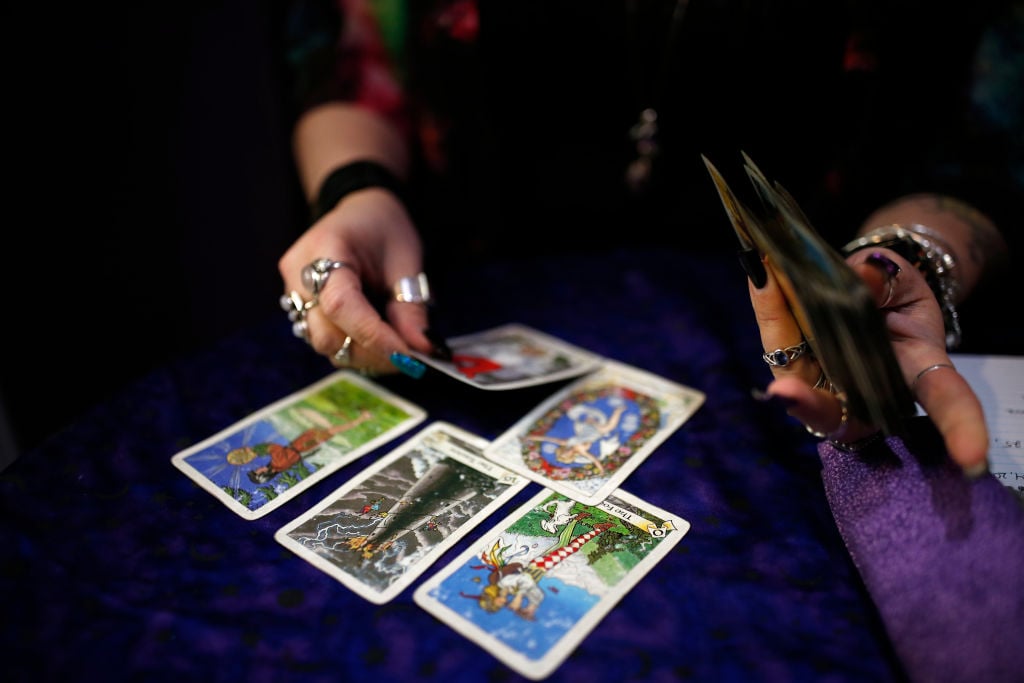
Our columnist passes judgment on the predictions he made at the start of 2022 to see where he got it right and where he missed the mark.

Tim Schneider

Every Wednesday, Artnet News brings you The Gray Market. The column decodes important stories from the previous week—and offers unparalleled insight into the inner workings of the art industry in the process.
‘Tis the season once again for candy canes, hot drinks in cold weather, holiday cheer… and a heaping helping of accountability for the Gray Market. Let’s get right into the judging, shall we?
Here’s how I contextualized this prediction in January:
“From what I’m reading, Omicron’s off-the-charts contagiousness might make it the variant that finally transitions Covid-19 into an endemic illness, meaning one so common and manageable that it no longer motivates states and businesses to maintain pandemic-level public-health restrictions.”
I would have been in good shape if I’d used that sentence as my basis for projecting what would happen with the major art fairs’ health protocols. Instead, I bet on risk aversion and lost.
The last big expo to mandate masks (let alone proof of anything more invasive) was Frieze New York in May. By the time art pros touched down in Switzerland for Art Basel the following month, the then-justified precautions of 2020–21 were ancient history… even as Omicron started knocking out fairgoers as the week went on.
(P.S. Shout out to the small German-speaking child who asked her mom in a frightened voice why I was wearing a mask on the train from Zurich to Basel. Just a great example of how over it Europe was by the time I started traveling internationally again.)
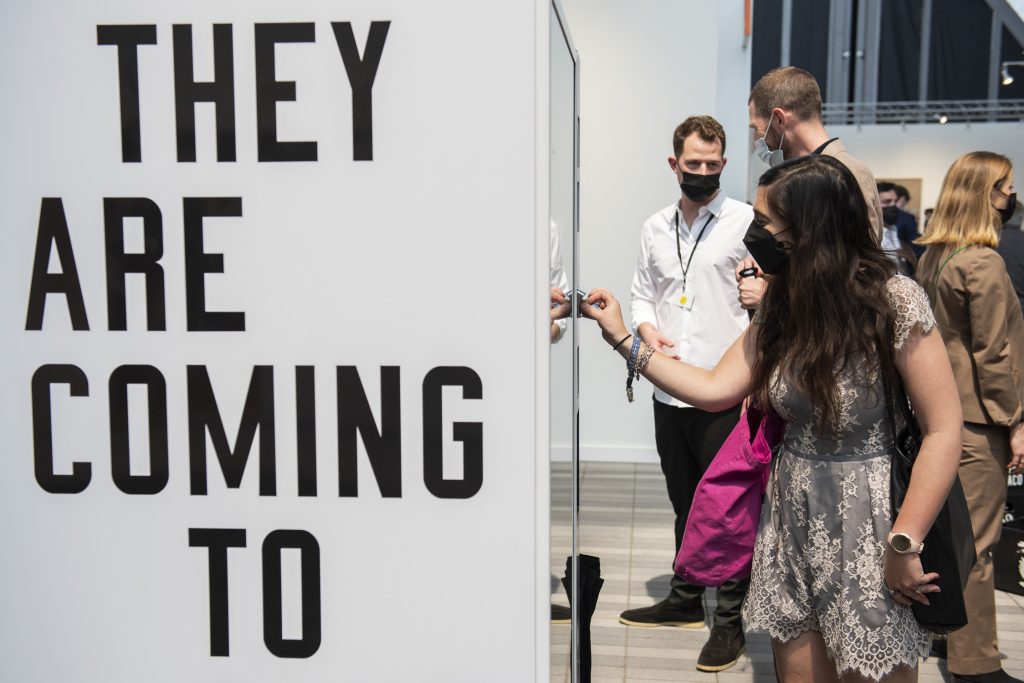
Gagosian’s Kafftee/Cofftea vending machine, conceived by German artist Albert Oehlen, at Frieze New York. Photo by Taylor Dafoe.
Major departures from the fair sector came close to bookending 2022.
On January 13, news broke that Victoria Siddall, who served as global director of Frieze Fairs from 2014 to 2020 before transitioning into a role as the group’s board chair, would step down at the end of February. Then, just before Halloween, Art Basel’s Marc Spiegler announced he would exit his position as global director to make way for his longtime protege Noah Horowitz, who ended a year-long stint at Sotheby’s to return to the Swiss fair brand in the newly created role of chief executive.
So I was right about two big pairs of shoes stepping out the doors of the two mightiest fairs in the land. But we don’t have enough information yet on where they’re headed to give a definitive ruling on this prediction.
For now, Siddall is the chair of the board of trustees at Studio Voltaire, the London nonprofit gallery and artists’ studio complex, and fights the good fight as co-founder of the Gallery Climate Coalition. Spiegler, meanwhile, has agreed to continue on as a strategic advisor to Art Basel through June of 2023, but his next move beyond that is anyone’s guess. If he were to take a job leading another fair brand afterward, I would be more shocked than if he decided to spend the next decade dishing out vigilante justice to criminals across Europe. Since the evaluation committee (of one) only deals in facts, though, this prediction only scores half a point.
I did a poor job of phrasing this prediction at the time, so I should clarify that my original intent was to quantify which destination in East/Southeast Asia would lure the most Western sellers to announce they were setting up shop in an ongoing way. By that measure, Seoul still wins. It just isn’t anywhere near as resounding a victory as I expected in January.
This year, we learned that Pace Gallery and Perrotin (both of which already had brick-and-mortar spaces in the Korean capital) would open lush new locations in the city in time for the inaugural edition of Frieze Seoul. Then, in November, Sotheby’s announced it would set up its first office in Seoul as part of a robust expansion in East Asia. From what I can tell after scouring trade media all year, these three moves outnumber those made by Westerners in every other Asian metropolis in 2022.
Most of the runners-up are all part of China. Sotheby’s above-mentioned expansion also includes lavish new headquarters in both Shanghai and Hong Kong (as well as an office in Bangkok, Thailand). Lisson gallery broadcast in March that it would open its first space in Beijing in November. And… that’s about it.
The question is whether these results say more about the increasingly shaky state of the economy or a cooling of international enthusiasm for Seoul’s art market as the year progressed. I lean toward the latter, if for no other reason than that dealers, in particular, have had no problem announcing or opening a slew of expansions and new spaces elsewhere since January—mainly in old favorites New York and Los Angeles. (I could name you at least 10 moves made in each, while Paris counted at least as much upsizing activity as Seoul this year). Keep an eye on this theme in 2023, especially as the telltale second edition of Frieze Seoul looms near summer’s end.
Between Q4 of 2021 and Q1 of 2022, the team at Artnet News (and other publications) heard plenty of well-sourced chatter about Patrick Drahi seriously exploring IPO’ing the auction house that he just acquired and took private at the end of 2019. My esteemed colleague Katya Kazakina added more velocity to the rumor mill by detailing Drahi’s long history of toggling his companies between public and private ownership whenever the financial incentives suggest it’s time to switch.
Then the 2022 economy shredded practically everyone’s best-laid plans like they were written on tissue paper.
There was distressing news for the investor class basically everywhere you looked. Runaway inflation pushed the price of nearly everything to painful levels around the world, spurring the U.S. Federal Reserve to jack up interest rates at a pace not seen in decades. The value of the S&P 500 tumbled more than 25 percent between January 1 and September 30. China went into a tailspin thanks to a crisis in its real-estate market and the government’s unforgiving zero-Covid policy. The cryptocurrency and NFT markets crashed and burned even before we found out that one of the most trusted names in (allegedly) decentralized finance has more than a puncher’s chance of going down as the most brazen fraud in history.
In other words, we went from one of the hottest IPO environments of all time in 2021 to a serious cold snap after the calendar turned over. A total of 1,333 companies went public in 2022, sucking up $179.5 billion in funding in the process, according to financial-services giant Ernst & Young. Those figures equate to 45 percent fewer IPOs raising 61 percent less cash year-over-year.
Patrick Drahi is no dummy, so it’s no surprise that Sotheby’s rode out such a rocky year in the financial markets by staying private. Forecasts for 2023 suggest that we shouldn’t expect his perspective to change anytime soon, either.
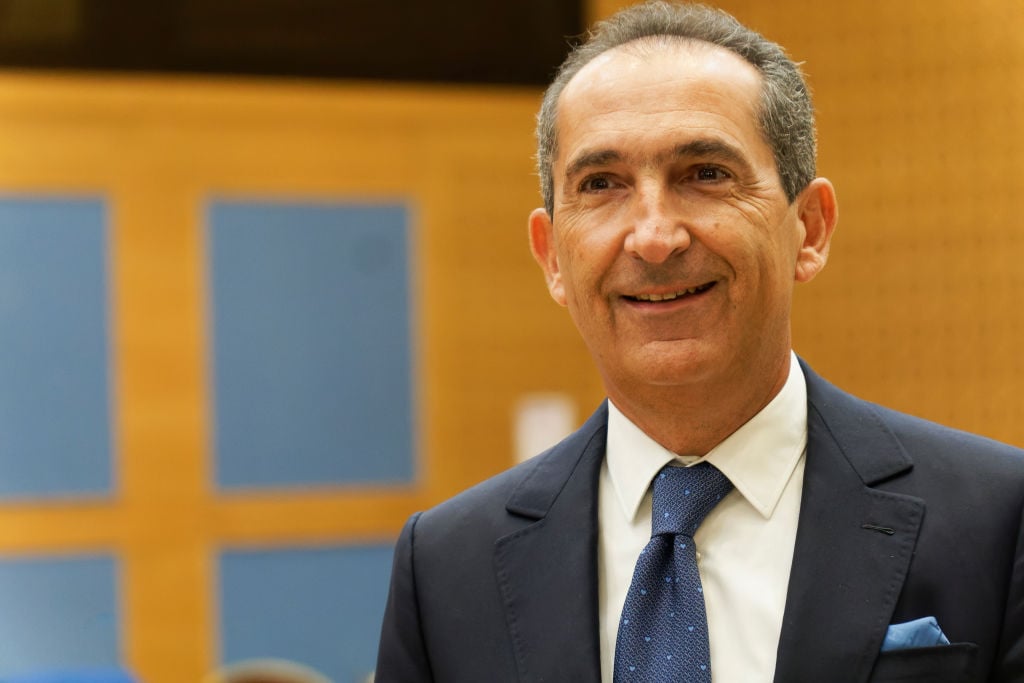
Patrick Drahi. (Photo by Daniel Pier/NurPhoto via Getty Images)
If this outcome caught you by surprise, I suspect you have plenty of company. Megatons of excitement amassed around the $1.5 billion sale of some of the late Paul Allen’s spectacular art holdings at Christie’s this November, while the spring auction cycle in New York boasted trophy lots aplenty from the collections of divorcées Linda and Harry Macklowe at Sotheby’s, and the estates of Thomas and Doris Ammann, as well as Anne Bass, at Christie’s.
But the high-brow names and fat estimates papered over a softening of demand synced up with the aforementioned turmoil in the global economy. The fall season in New York was especially illustrative in this sense. Set aside the Allen sale, strip away the distorting lenses of fees and the usual financial revisionism induced by withdrawn lots, and five of the seven evening auctions of fine art at the Big Three houses underperformed their low estimate.
Yet this prediction still might have missed the mark had inflation not been such a monster. Based on the raw totals alone, the first 11 months of 2022 ($14.45 billion worth of fine-art sales) would have edged the equivalent period in 2021 ($14.30 billion) by less than $156 million after fees, per the Artnet Price Database. Adjusted for inflation, however, the figure for January through November of last year balloons to just under $15.3 billion—putting 2021 ahead by almost a full billion dollars.
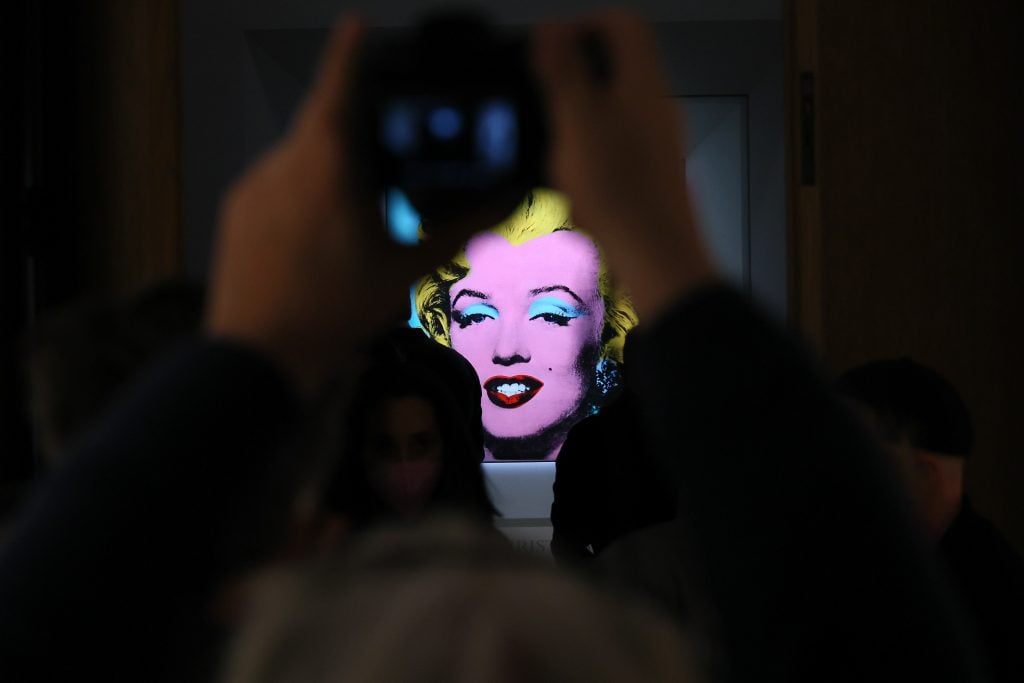
Christie’s photocall for Andy Warhol’s Shot Sage Blue Marilyn, which sold for $195 million in the Thomas and Doris Ammann sale at Christie’s. (Photo by Dia Dipasupil/Getty Images)
I should note that the scoring on this one is imprecise. A spokesperson for the American Alliance of Museums said that the organization does not keep a list of new director hires among its member institutions, and the Association of Art Museum Directors did not respond to an email request for the same. So the results here are based on what I could aggregate myself.
That said, they were also so weighted toward women (in particular) and BIPOC that even if I missed a few, it won’t change the overall ruling.
Of the 12 directors hired in an ongoing capacity at U.S. art museums (or their parent institutions) this year, only three were white dudes: new SFMOMA director Christopher Bedford, new Phillips Collection director Jonathan Binstock, and new Ukrainian Museum (New York) director Peter Doroshenko. The other nine pushed the scales a little closer toward gender and/or racial equity. They were…
*Before I move on, this subject all but demands an aside on the curious case of Cara Courage. In February, the Museum of Contemporary Art Detroit appointed Courage to its top job. Less than three months later, the institution’s executive committee announced it had “parted ways” with her. No further details were given at the time, and I’m not aware of any others surfacing in the months since. Given the odd circumstances, though, it didn’t seem right to include Courage in the official total.

Colette Pierce Burnette was appointed president and CEO of Newfields earlier this year. Photo courtesy of Newfields.
Since mid-January, workers have voted to form new unions at the Art Institute of Chicago, the Baltimore Museum of Art, the Columbus Museum of Art, the Dia Art Foundation, the Jewish Museum in New York, and the Tacoma Art Museum in Washington state. While management at the corresponding institutions has not formally recognized all of the above entities (let alone negotiated contracts with them), their creation shows that the momentum toward labor solidarity only grew stronger among U.S. art museums in 2022.
I can’t say the same about auction houses, galleries, and other for-profit workplaces. The past year was barren of unionization efforts on this side of the industry, even as many, if not most, support staffers struggle to earn a living wage. The circumstances are unlikely to change based on the (usually) inherently unfavorable economics of the business, the relatively small number of opportunities in the industry overall, and the longstanding skew toward workers with enough family wealth to make up for skimpy paychecks and scarce benefits. But that doesn’t mean the status quo is okay.
Beeple’s first solo gallery exhibition took place at Jack Hanley in New York this March. As we round into the winter holidays, the artist born Mike Winkelmann still hasn’t opted for ongoing representation by Hanley or any other dealer.
However, he still doesn’t have an agent from CAA, Endeavor, or UTA yet, either. From the outside, then, it seems that the most influential advisors on his career in 2022 have been former Christie’s dealmaker Loïc Gouzer, Castello di Rivoli director Carolyn Christov-Bakargiev, and possibly crypto-entrepreneur-turned-digital-art-evangelist Ryan Zurrer.
Regardless of whose counsel he’s taking, Winkelmann is now hard at work building a 50,000 square-foot hybrid studio complex and digital-art museum in Charleston, South Carolina. Maybe he’s content to stay independent for the long run, or maybe the building’s completion will be the event that finally pushes him to sign on the dotted line with some kind of representative, whether they’re working out of one of the Big Three entertainment agencies or one of the high-level white cubes.
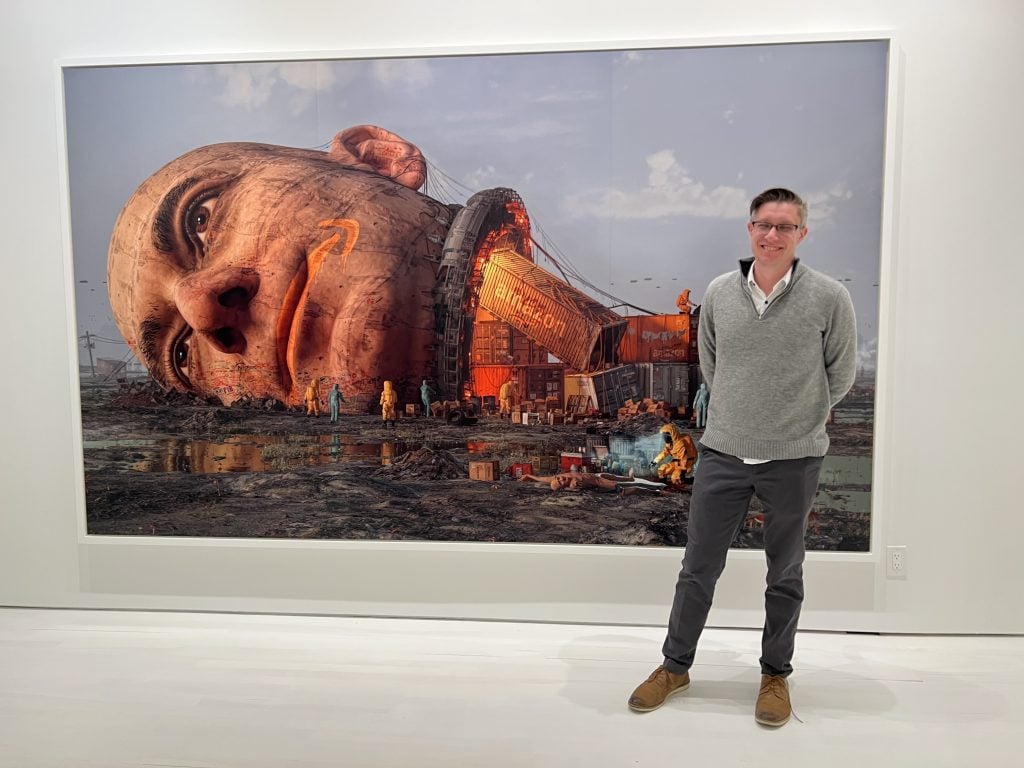
Mike Winkelmann aka Beeple at his exhibition, “Beeple: Uncertain Future,” at Jack Hanley gallery in Tribeca. Photo: Katya Kazakina.
This one turned out to be closer than I expected based on the year-long swoon in crypto and NFT prices… although even the closest contender deserves an asterisk the size of the Death Star.
In February, CryptoPunk #5822 allegedly sold to Deepak Thaplyal, the CEO of Web3-services startup Chain, for 8,000 ETH. That amount translated to roughly $23.7 million at the time. But no single NFT has traded for more money since, as far as I can tell, keeping my $25 million price ceiling intact.
Even though I won this round regardless, a little more needs to be said about its bearing on the NFT market as a whole in 2022. The only evidence that CryptoPunk #5822 changed hands for the equivalent of $23.7 million consists of a tweet from a bot created by Larva Labs to track sales from its hit NFT series on the Ethereum blockchain, and tweets from Thaplyal announcing his acquisition. I don’t doubt that Thaplyal bought the token. It’s just that there have been too many instances of big-ticket NFT wash trading in the past two years for me to feel totally comfortable believing that he actually parted with 8,000 ETH for the privilege.
More importantly, perhaps, is that 8,000 ETH only equated to roughly $9.3 million on the day I filed this column, reflecting a plunge in value of more than 60 percent for the cryptocurrency since February. If Thaplyal did really fork over 8,000 ETH, he paid a head-spinning premium for a digital asset worth about 2.5X less in real dollar terms 10 months later. That’s not just a loss for him; it’s a loss for everyone who bought NFTs before the depth of the market’s decline started to come into view.
My last chance to cash in this prediction evaporated when Sotheby’s postponed an auction for another first printing of the U.S Constitution scheduled for December 13. The house cited “strong institutional interest” for the historic document as the reason to pull the plug. The choice precluded what might have been one of the year’s pricier and more memorable bidding battles; you may recall that, the last time Sotheby’s offered a first printing of the Constitution, it sold for $43.2 million to hedge-fund magnate Ken Griffin.
One side effect of the new auction’s cancellation was the short-circuiting of ConstitutionDAO2 (aka UnumDAO), the ostensibly bottom-up crypto body formed for the express purpose of succeeding where the original ConstitutionDAO failed, partly by learning from the latter’s mistakes. (Lesson one: hide the full size of your war chest so your rivals don’t know when you’ll be forced to stop bidding.) With no unifying acquisition to pursue, ConstitutionDAO2 has been forced to do the type of soul-searching about its purpose usually reserved for stoned university students and people weathering the aftermath of a breakup.
What’s more telling is that it seems I would have flamed out on this prediction even if I hadn’t tethered it to a minimum purchase price of $1 million. In early December, I asked the Big Three auction houses if a DAO had won any lots, regardless of cost, in 2022. A Sotheby’s spokesperson said that they were not aware of any this year. Reps from Christie’s did not respond, and Phillips declined to comment through a house spokesperson, citing client confidentiality.
That doesn’t necessarily mean that we should jettison the notion of DAOs as serious patrons of the arts. Consider that Arkive DAO, which is aiming to build a decentralized museum, commanded a coveted space in Art Basel Miami Beach’s VIP lounge this year; PleasrDAO’s multimillion-dollar campaign to acquire digital art and internet history landed its leader on the 2022 Artnet News Innovators List; and the social DAO Friends With Benefits funneled $100,000 from OpenSea into commissioning online-offline hybrid works (again, I refuse to dignify “phygital”) this past August.
Still, 2022 does seem to indicate that DAOs are more interested in collecting and commissioning outside the longstanding structures of the old-school art market. That’s just one trend to keep our eyes on as we hurtle over the precipice into another new year.
‘Til then, remember: It’s easy to make bold statements when no one is keeping the receipts.